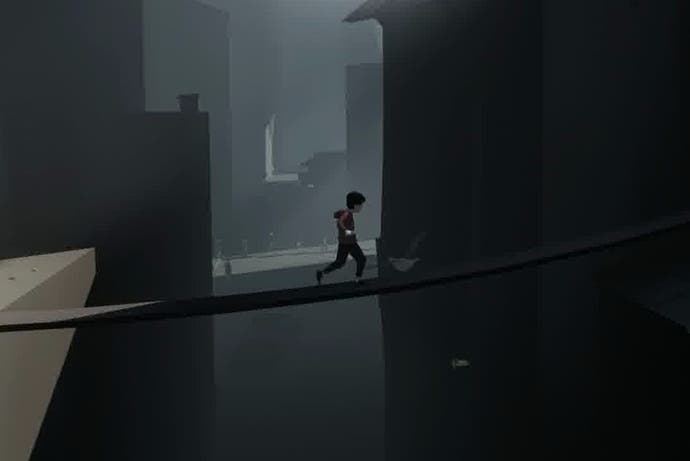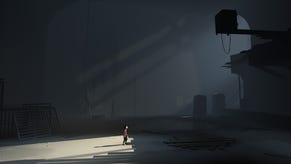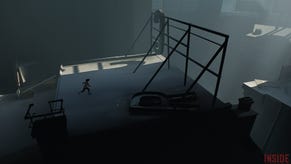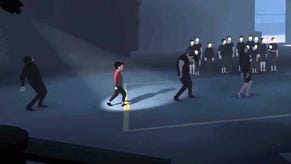Inside review
Akimbo.
I spent the first few hours of Inside thinking: sure, this is all fine, but it's hardly the spider, is it? That's the danger of making a follow-up to a game that has such a singular impact, I guess. In my memory, at least, when you're playing Limbo, when you're navigating that monochromatic dream world riddled with 2D platforming puzzles, you're either dealing with the spider or you're worrying about her coming back again. Inside's another near-monochromatic affair (although the understated use of dreary dawn colour is really excellent). It's set on a 2D plane once more and it's filled with all manner of platforming puzzles. Inside even has the same deft wit when it comes to delivering endless, crushing death after death after death, always with an appealing kind of bluntness. This is death as a full-stop: silent, definitive, dramatically non-dramatic. Death that says: that didn't work, so what now?
And yet, no spider. No spider equivalent. No ersatz spider. What's Playdead up to?
Then, somewhere around the two hour mark, I realised I'd stopped thinking about the spider. Inside doesn't replace it - although the last 20 minutes of this are easily the most memorable 20 minutes of any video game I've played in an age. It's more that the craft and care on display start to lift Inside above the impact of any one set-piece. Well, until the final set-piece, that is, but let's say no more about that. No spoilers. And for once it's not even a spoiler to know that there's something waiting for you that might very well be spoiled by reading too much. Trust me: it's not like you're going to guess it this time.
Inside, then, is better than Limbo. Its puzzles are better, its staging and its pacing is better. It has ditched a little of Limbo's lingering triteness, its smugness as its own singular nature. It's also, it must be said, pretty similar to Limbo in a lot of ways. You're a child once more, advancing left to right through a terrifying environment and overcoming hurdles that are often literally hurdles. The puzzles and the plot are one and the same here. Both can be summed up by that basic idea of getting from the left to the right.
So what's different? There's much more of an emphasis on stealth for one thing, which means there's much more of an emphasis on the world around you. While you move along a 2D plane in Inside, the rest of the landscape is always worth paying attention to, whether it's early on, when there are sinister vans (not hard to make a van sinister, is it?) tracking you through a dark forest, to further down the road where woodland has given way to cornfields and then abandoned factories, and where machines, all of which exist in that wonderful Half-Life liminal zone where it's tricky to tell what's man-made and what's something else entirely, track you with searchlights and strange, one-hit weapons.
Stealth in Inside is a surprisingly broad concept, in fact. To Playdead, it means everything from keeping out of sight to behaving in certain ways when you're entirely visible. It's often heavily rhythmic, and at times the puzzle of it is finding out which environmental and audio cues to sync yourself with.

And the other puzzles are just as smart. As it happens, the absolute smartest thing Playdead does here is to find a way to make the player feel smart too. This isn't a hard game, and yet its best puzzles still hinge on that kind of alien logic that makes you laugh out loud when you realise what's actually expected of you. The trick, I think, is to make it clear which elements belong inside a puzzle and which are extraneous. You're more willing to put in the experimentation required for many of Inside's best solutions because you can feel confident that the crucial pieces will all be close to hand. No worries about backtracking - even in a rather complex, multi-part brainteaser that sits right at the centre of the middle act. You just play with the things you have close to you until their deeper possibilities start to suggest themselves.
Best yet, although there are some spectacular gadgets and gimmicks along the way - particularly those that include inventive and wonderfully unnerving use of NPCs - the very greatest puzzles draw new life from things that puzzle games have been messing with for ages: water, gravity, seek-and-kill AI, crates. Crates! There is honestly a crate puzzle so good in this game that I woke up on Sunday laughing about it all over again.
And that laughter is perhaps the most surprising thing about Inside - right up until, you know, that ending. Like Limbo, there is plenty of comedy here in amongst the darkness, and because the darkness is all that more grim this time, the laughs are just a bit sharper too. As with the cleverest of Inside's tricks, the narrative itself is best discovered through the act of playing, but it's worth saying that Playdead's latest certainly feels peculiarly topical as it ceaselessly orbits persecution, violence, and all the other dehumanising, self-defeating monsters of fear. It toys with the meaning of that word, inside, until there's nothing left to it that doesn't feel strange and unsettling.
Uncanny. Now there's a great word, and its original German version is even better. Unheimlich. Un-homelike, in the enduringly popular mistranslation. A little bit of xenophobia to it. A little bit of veiled prejudice. The sort of thing that conjures vans in the darkness, and casts the ghostly light of their headlamps through the thin trees.



















